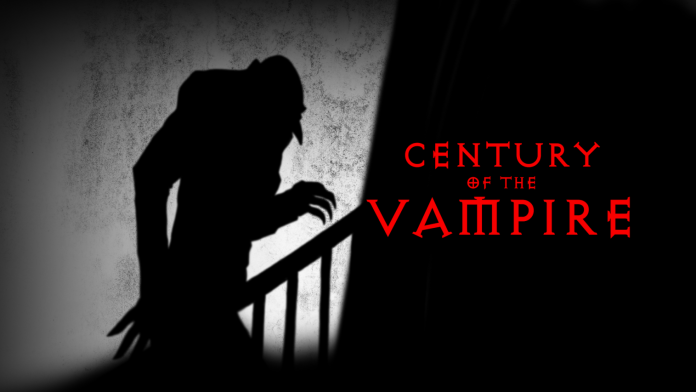Welcome to the Century of the Vampire, an ongoing weekly feature where Goonhammer managing editor Jonathan Bernhardt watches some piece of vampire media, probably a movie but maybe eventually television will get a spot in here too, and talks about it at some length in the context of both its own value as a piece of art and as a representation of the weird undead guys that dominate western pop culture who aren’t (usually) zombies.
Last week, Bernhardt reviewed the 1979 Werner Herzog film Nosferatu the Vampyre. Today, he looks at the 2000 E. Elias Merhige film, Shadow of the Vampire. This article will contain spoilers.
And finally, we have the apotheosis of the Nosferatu films, and the greatest Count Orlock performance yet committed to film.
Shadow of the Vampire is usually described as a horror-comedy, which is accurate enough; it is quite serious and horrifying when it wishes to be and no less funny than either of the preceding Nosferatus. The Eggers version of the film is about the farthest this ersatz ‘franchise’ has strayed from its comic roots, and even that rendition of the tale gets some laughs out of how cloyingly self-serious it is. It was successful enough in theaters to make back its budget and little more; Ebert loved it but a number of critics very much did not. This, from the man who remains The Guardian’s lead film critic to this day, is a good example of the kind of negative review the film got when it came out: Full of lapses in attention (contra Bradshaw’s claim that it appears nowhere in the film, the “symphony of horror” subtitle from the 1922 original is said aloud by the writer Galeen as soon as Murnau finishes shooting the first scene with Orlock) and fundamental culture-critic tediousness (“So are we supposed to laugh at Malkovich and Dafoe, or with them, or what?” Bradshaw asks, rather than doing the job of answering this for himself and his audience). Fine; so it goes. This film was never going to find purchase with those who think that “in making Max Schreck a genuine vampire, playing an imaginary vampire in a film, [Merhige is] giving us twice as much vampire as we really need.” A ridiculous statement with a ridiculous premise. Are you here for the vampire feature or not, sir?
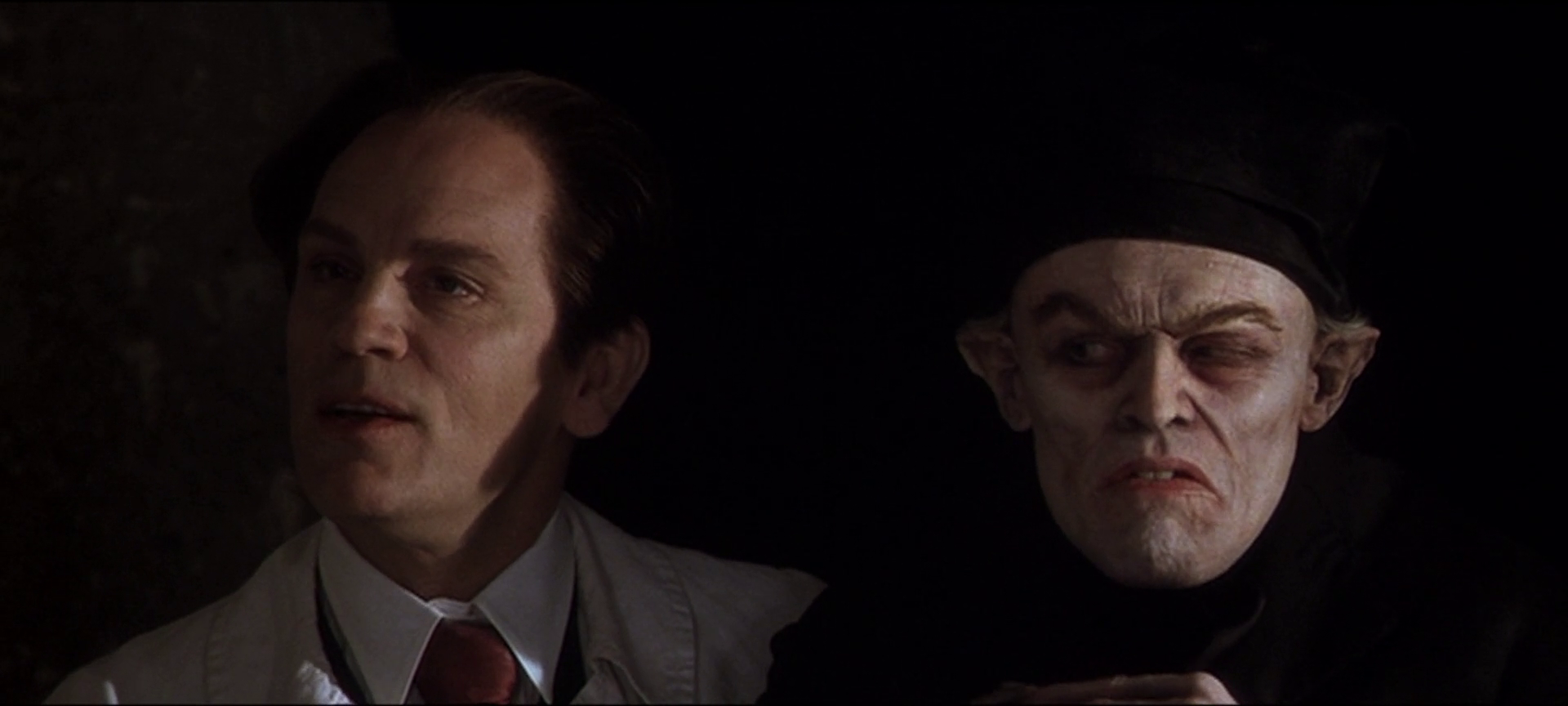
The answer is that you’re supposed to laugh with and at John Malkovich’s Friedrich Murnau and Willem Dafoe’s “Max Schreck;” you’re also supposed to be scared of both of them. They are dual villains in the film, and the one that wins in the end is the predator that prefigures the next 20 years of German history, not the ancient blood-soaked empires of the past.
The plot and story of the movie itself are very…impressionistic, at times, if you want to be kind; scattershot and vaguely-drawn if you do not. Steven Katz’s original script for Shadow of the Vampire is some 113 pages, leading to roughly a 110-minute feature if you go by the minute-per-page shooting rule. The actual feature comes in at 92 minutes, and entirely cuts a cabaret subplot for Murnau with a vampire lover who turns out to be Orlock’s creator, along with a number of attacks and kills by Orlock that would have more clearly demonized the character and also provided actual connective tissue to explicitly show that e.g. camera operator Wolfgang Muller was being fed upon by the vampire ever since the company arrived in the Carpathians, rather than this solely being implied by fainting spells up until Orlock’s attack on set. Mirroring the production of both the 1922 and 1979 Nosferatus, Shadow of the Vampire clearly runs out of funding in the final act, and jumps from Wismar to an island bunker contrived for the final showdown (so none can escape, you see) at the filming of the final scene, with nothing but a title card with the new location name and quick shot of Murnau “landing” a biplane with Orlock’s coffin strapped to the back. By the end of the film all but five characters have completely vanished, with the remaining principals shuffled to this island so that they all can die in the unforgiving lens of Murnau’s camera.
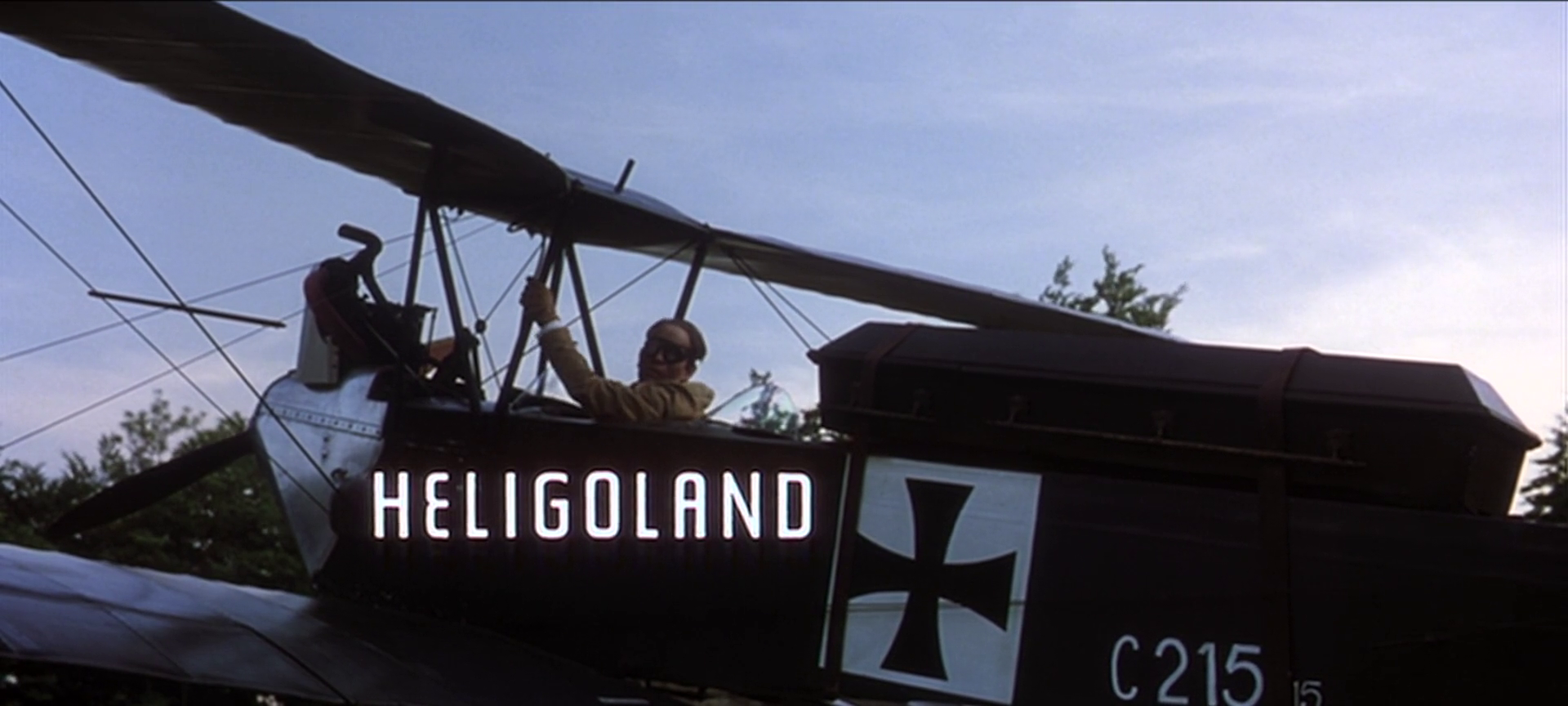
To be clear: This is fine. This is not a film you come to see for the faithfully-recreated story beats of the book Dracula. This is not a documentary about the making of the actual F.W. Murnau’s actual Nosferatu: A Symphony of Horror. You come to see this film to see Malkovich and Dafoe’s performances and the way that the more normal members of the cast bounce off of them, swept up in their madness. This is the all-time Orlock performance, bar none, from Dafoe: Not an insect; not a grandiose and goofy headcase; not a husk of a warlord possessed by pure demonic appetite. This Orlock is old, old enough that his mind is half gone but can remember being a man, can remember how that felt and remember liking it. He remembers loving the woman who turned him into a vampire then left him, and he remembers losing all his memories of her over time.
He can drink; he gets drunk. In one of the movie’s better scenes, as the producer Grau (Udo Kier) and the writer Galeen (Aden Gillet) ask “Max Schreck” about “his character’s” history, Orlock drinks a quarter bottle of schnapps, tells them his sad tale interrupted by plucking a bat out of the sky and tearing off its head in his mouth to drink it dry, then drinks a quarter bottle more before wandering off.
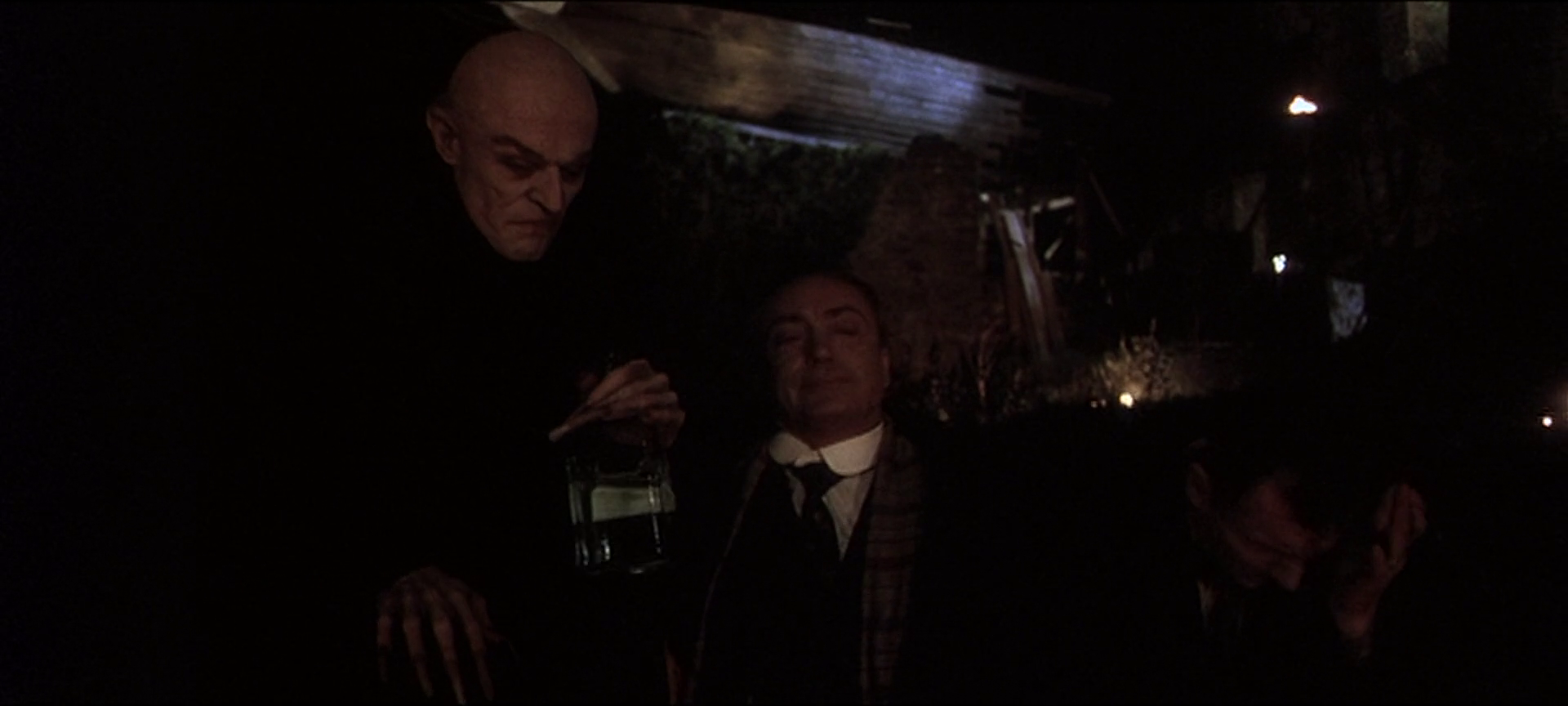
He is crude and unmannered, sometimes with animalistic scrabbling and hissing at intrusive set assistants, but also in the more recognizable mode of an old pervert who simply doesn’t care about social graces anymore. When he sees the photo in the prop locket of Greta Schröder (Catherine McCormick), the actress playing Ellen, he comments not on her lovely neck but her lovely bosom, to groans from the crew and irritation from Murnau. Orlock is infatuated with Greta not because the demon inside him is supernaturally connected to her or she fundamentally understands the darkness within him — he simply has seen pictures of her before, knows she is famous and beautiful, and desires to have her. Despite his appearance, his behavioral tics, and his propensity for killing the production’s crew, Dafoe’s Orlock is legible as a human monster. The old lich is an old lech. By the end of the film, everyone still alive realizes what Orlock is; it’s Murnau that’s got them all fooled.
It’s worth noting that this fictionalized portrayal of Murnau is a bit of a dirty deed on the memory of the real man, who was by all accounts pleasant, emigrated from Germany to Hollywood well before the rise of Hitler and the Reich, and died in the prime of his career in a tragic car accident in 1931. This Murnau, played by a Malkovich some ten years older than the real man would have been during the shooting of Nosferatu and with a cartoonish, sinister command of his film set, is a deviant fanatic willing to sacrifice anyone and anything on the altar of his great work. He comes upon Orlock when location scouting for the film and eagerly agrees to a devil’s bargain with the old monster, believing the terms are fully in his favor: Orlock will act in his movie as himself, and in return, he will get Greta. It is unclear when Murnau fully commits to killing everyone involved with the production, including Orlock, if it is necessary to realize his dream — but he’s certainly entertaining the idea before the events of the first scene in the movie, where he lures Greta to her eventual demise with promises of international stardom on the silver screen. Everything after that is just a re-negotiation of terms.
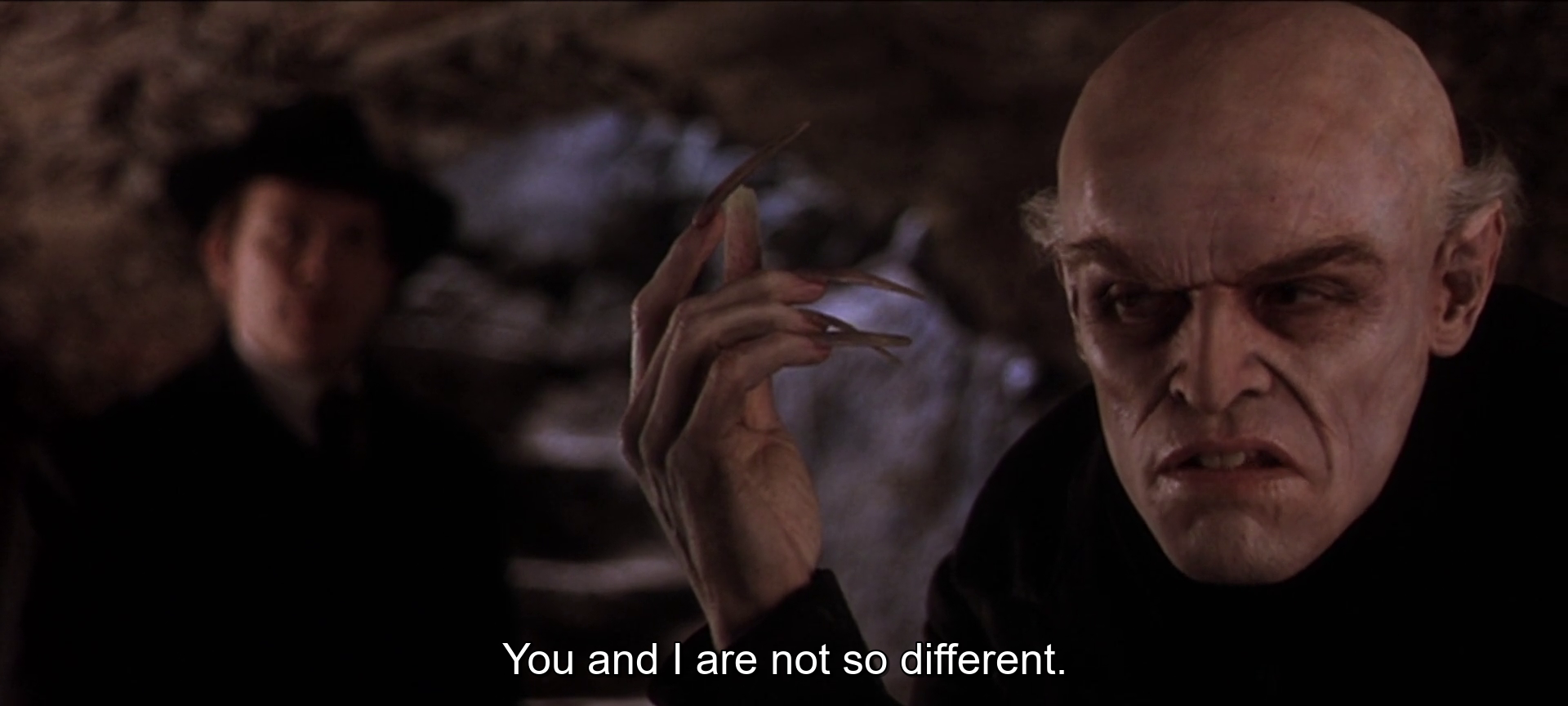
There is no Renfield or Knock in Murnau’s film because Murnau is Renfield. Instead of a real estate broker with a sideline in the occult and hidden but simmering homicidal mania, this fictional Murnau is a cultural broker, a respected man of the German film industry who gives men jobs and uses his position of power to arrange for them to fall into the clutches of the vampire. He secretly indulges in lurid, hedonistic vices — a morphine addict; a patron of cabarets and exclusive sex clubs — while maintaining his reputable image and thus his power. His right-hand man Wagner, a vicious, manipulative tweaker with a full medicine cabinet and the hair and jawline of an SS recruiting poster, is just as integral to Greta’s eventual demise as her own addictions and Murnau himself. The first moments of the final scene where Murnau, Wagner, and Grau pressure her into position to be fed upon by Orlock despite her rising panic are the most tense and uncomfortable of the film. She realizes too late the quality of man with which she has surrounded herself. They all go down together, the lone survivor Murnau clearly losing what’s left of his mind, and perhaps that’s for the best; in fifteen years’ time, all of those men would have been Nazis. In a particularly unsubtle moment underlining this, when Grau and Wagner find Murnau in his chambers right before the film’s climax out of his mind on morphine, one of the symbols of protection he has drawn on the wall framed in full view of the camera and in the middle of the shot is a swastika. It of course meant something very different in 1922; but this movie wasn’t made in 1922.
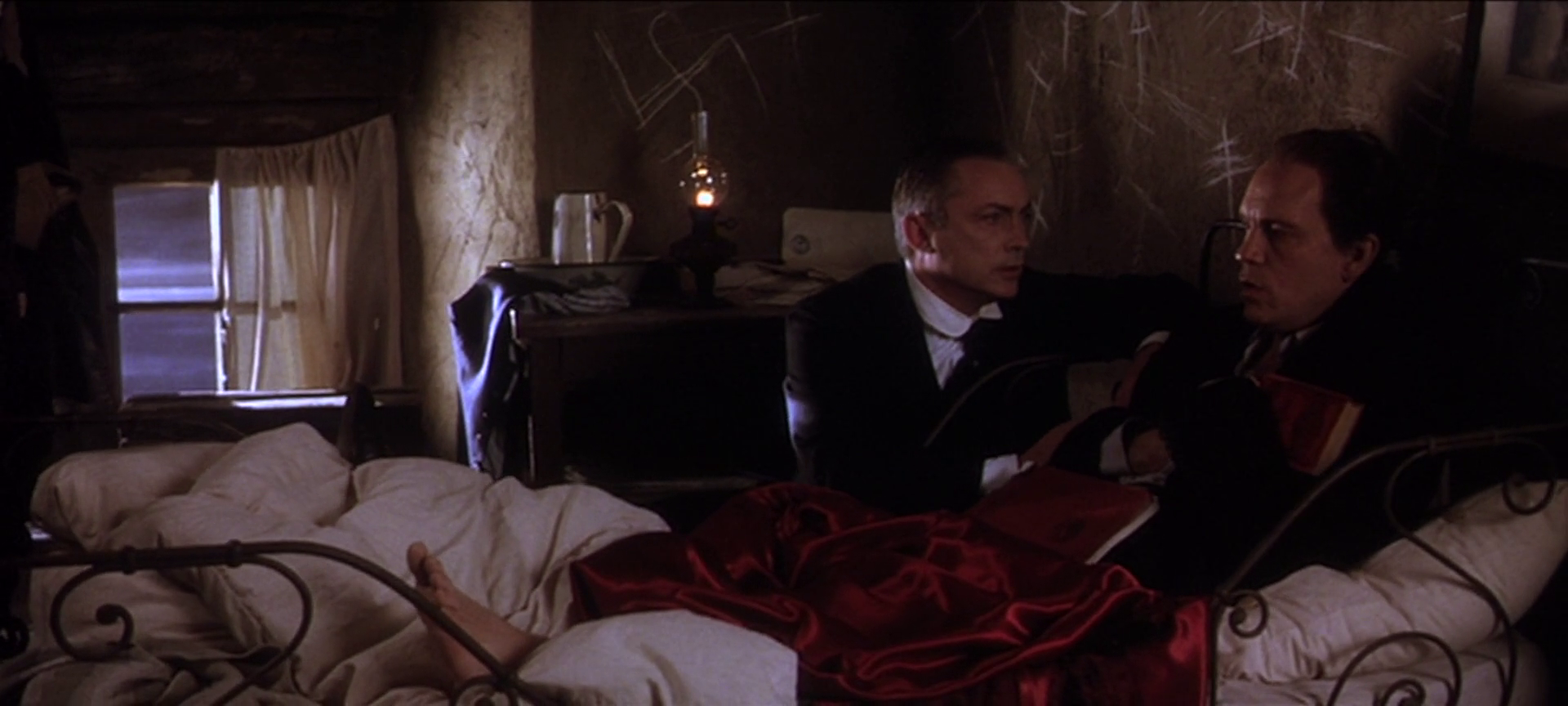
So Murnau is Renfield, but unfortunately for the vampire, he is not Orlock’s Renfield. He is the camera’s. In that first scene with Greta, she has a line when Murnau asks her why she’d ever prefer the stage to his films: “A theatrical audience gives you life, while this thing…” –and here she indicates Murnau’s lens– “…merely takes it from you.” The camera is Murnau’s god; Murnau’s weapon; Murnau’s monster. This is not the only time in the film these parallels are drawn: Orlock will seize upon it in a solitary moment during the shooting in Transylvania, letting the light play across him and casting, ah there it is, the shadow of the vampire. Murnau is operating the machine in the climax of the film as Orlock kills Wagner and Grau; after strangling the life from the producer, Orlock turns to the camera and advances on the director. Murnau tells him to get back to his spot on the set. We see Orlock through the camera’s eye, subject to its power in the same language of cinema as when a vampire hypnotizes a victim. Taking off his goggles, Murnau calmly informs his star actor: “If it’s not in frame, it doesn’t exist.” His monstrosity — his and the camera’s — overpowers the vampire’s. The shoot continues. Murnau has gone quite obviously mad by now; there are many reasons why Herzog and Kinski’s relationship on set in the 1979 film was seen as an inspiration for Murnau’s and Orlock’s in Shadow of the Vampire, but none is more convincing than the way Murnau gives his actors stage direction during filming. Here is the direction he gives Orlock, as the vampire dies:
MURNAU.
Then finally, you must turn…to meet the sun. The death of centuries, moon chaser, blasphemer, monkey vase of prehistory — finally to earth, and finally born. Yes, yes. Yes. You take the sun. [to GRAU, dead] Albin, could you quickly collect the wooden stake and return it to its rightful place? It is necessary for the final frame, to remind us of the inadequacy of our plans, our contingencies; every missed train, the failed picnics, every lie to a child. [to GALEEN and CREW, entering] Softly, please. Our work is nearly complete. Our very own painting on our very own cave wall. Time will no longer be a dark spot on our lungs. They will no longer be able to say, ‘You would had to have been there.’ Because the fact is, Albin, we were.
This is not how the film ends in Katz’s original script, where the vampire is defeated and Murnau, Wagner (that’s Cary Elwes there, looking like Nazi Indiana Jones), Greta, and Grau all live. Here, the vampire cuts the chain on the counterweight that would throw open the door to the dawn; here, the vampire doesn’t respect the script’s ludicrous decision to have Wagner’s machine gun fire (replaced in the film with the very clear, distinctive silhouette of a Luger pistol) slow him down and trivially dispatches the man. Here, the filming of Murnau’s masterpiece is completed, but it is quite a different film than the one that exists in our world. It cannot be shown in any theater. It is evidence of a crime. It was made by a madman.
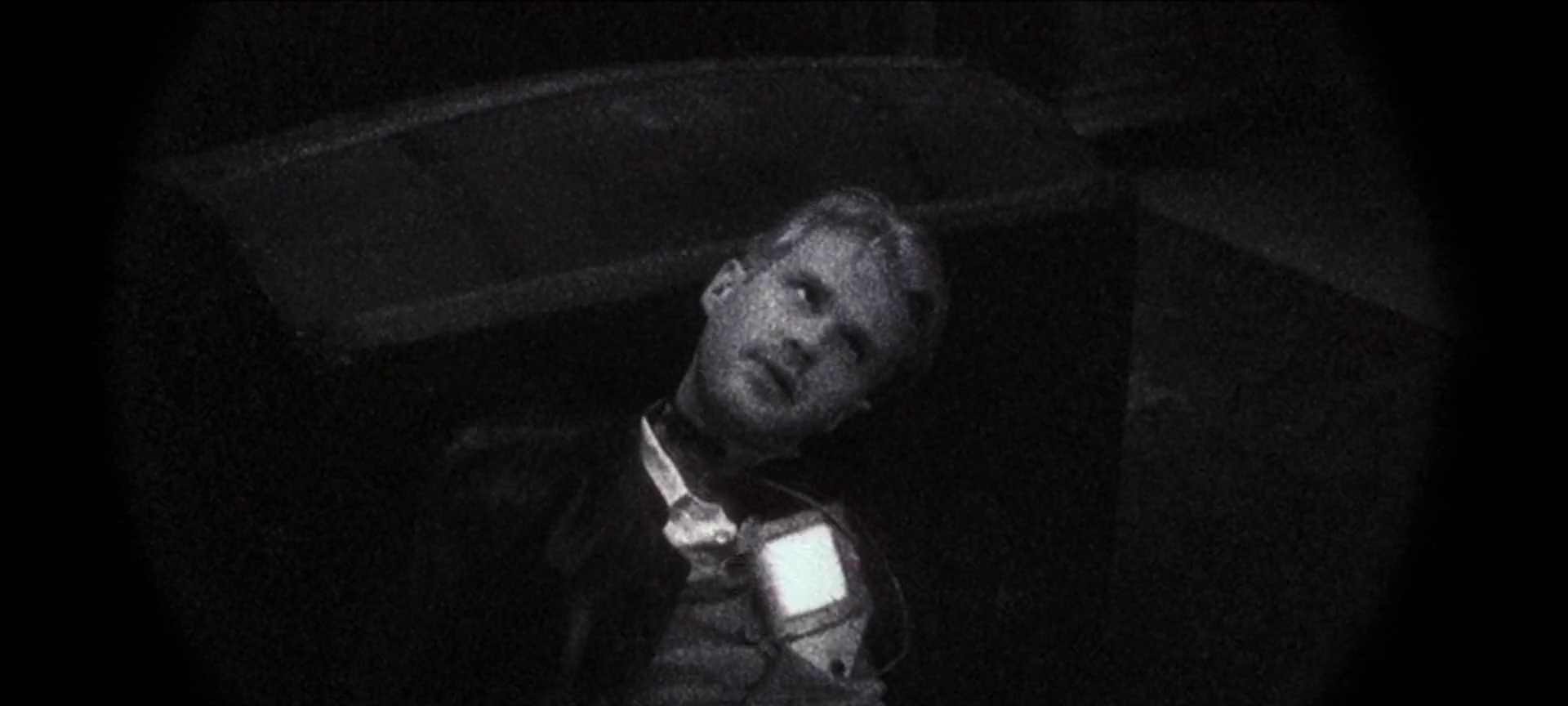
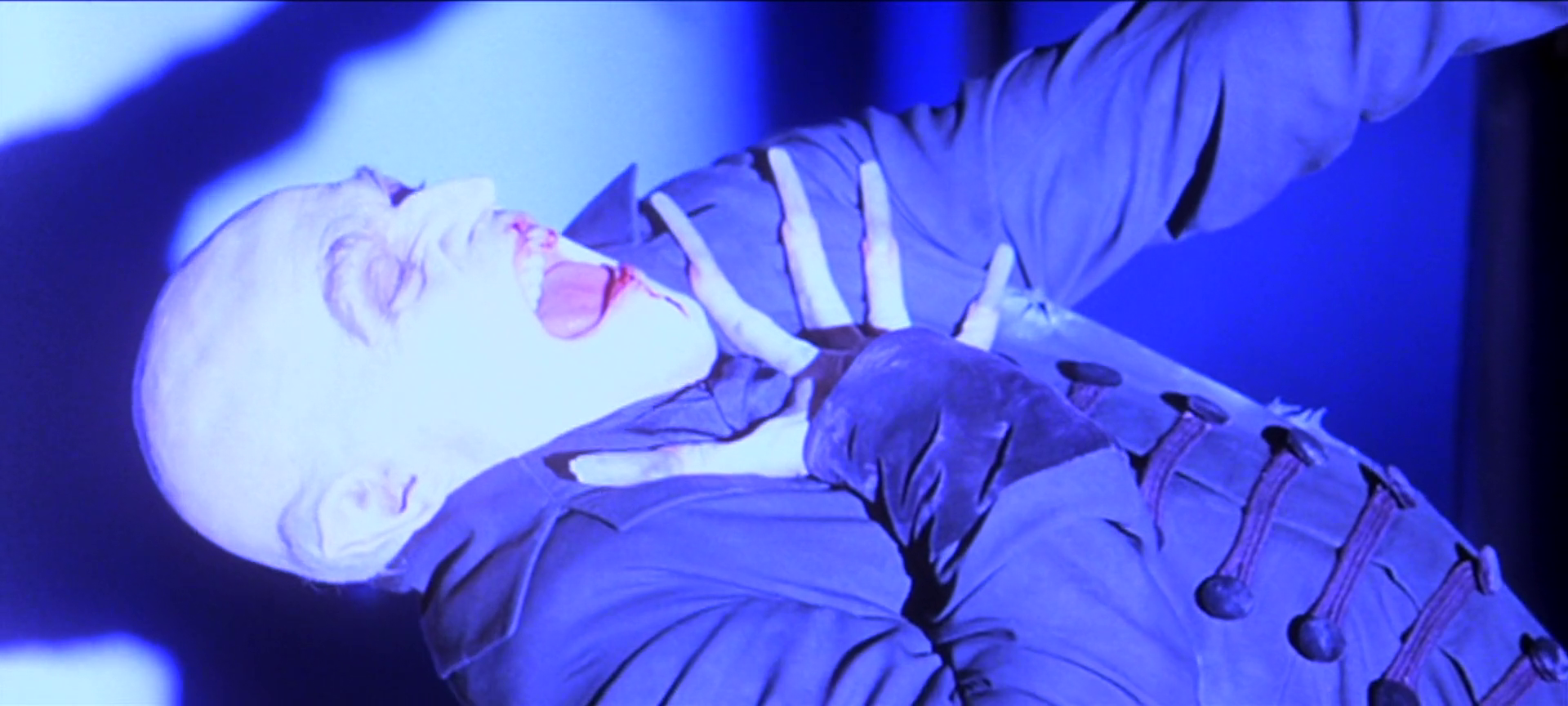
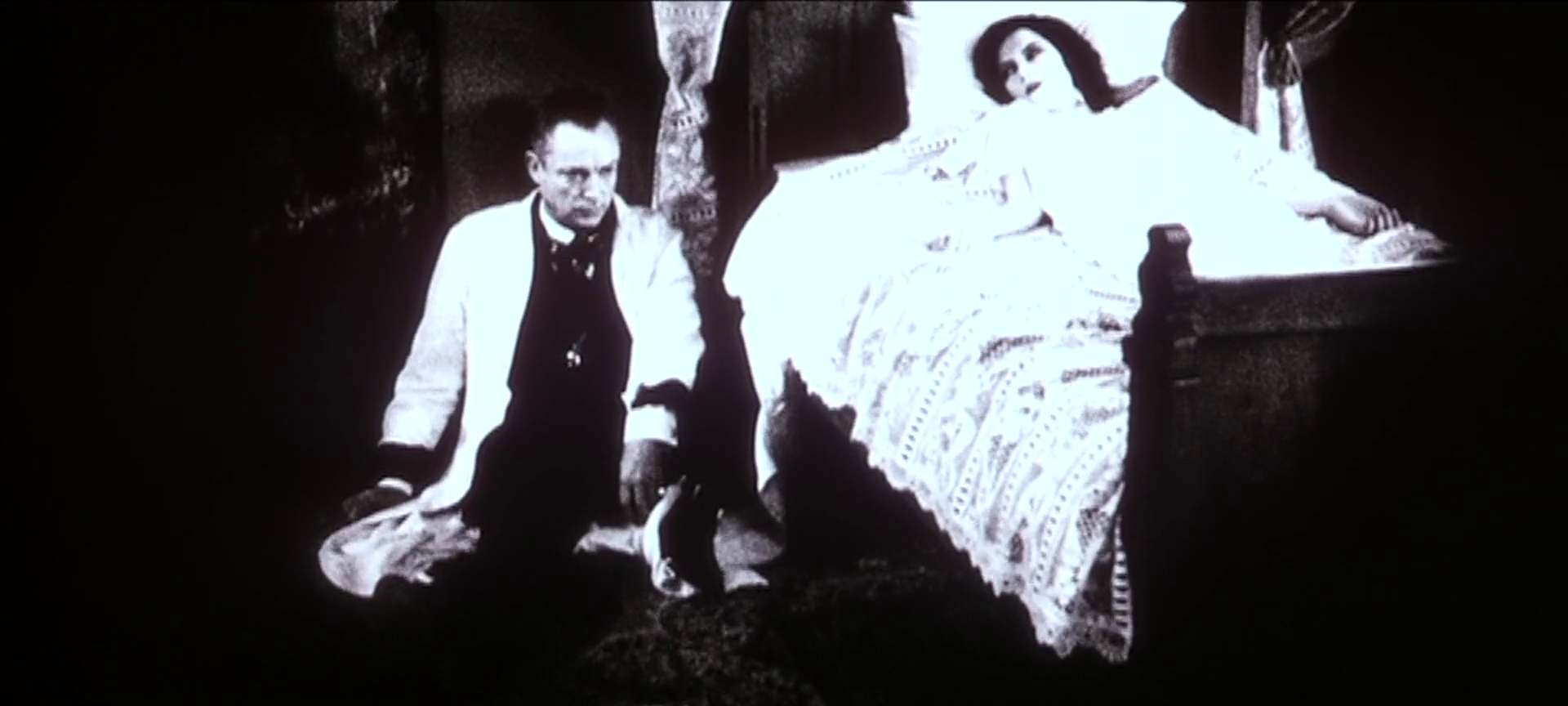
Is it a perfect film? By no means. Kier’s Grau is able to get maybe half his line-reads right; the others land flat. Eddie Izzard’s Gustav is an integral part of the film’s first two acts and then completely vanishes in the third, with the secondary Hutter-esque protagonist role taken up by Wagner. There is a huge hole where the cut cabaret-vampire plot was wisely excised but not backfilled particularly well. This thing gets by completely on vibes and the two top-billed performances. If you’re here for Malkovich’s malevolent proto-Nazi Herzog-aping Murnau and Dafoe’s best-in-class old creepy bloodsucker Orlock, you’re gonna get a heaping helping of what you came for. If you want a film that turns to you and says, “It’s time to laugh now,” it may not be for you, Guardian film critic. If you want an actual history of the production of F.W. Murnau’s 1922 film Nosferatu: A Symphony of Horror, you have somehow ended up in the completely wrong place. This is probably gonna be my favorite thing I watch for this column for awhile.
Next week, something substantially different. It’s still the same basic story, but this time it’s Dracula-ass Dracula: Francis Ford Coppola’s 1992 Bram Stoker’s Dracula, to be precise. Then we’ll go back and watch the Bela Lugosi and Christopher Lee installments before I have to watch…Dracula 2000. I guess by then I’ll be ready for any major change from the standard plot, even if it does involve going to Brooklyn.
Have any questions or feedback? Drop us a note in the comments below or email us at contact@goonhammer.com. Want articles like this linked in your inbox every Monday morning? Sign up for our newsletter. And don’t forget that you can support us on Patreon for backer rewards like early video content, Administratum access, an ad-free experience on our website and more.
